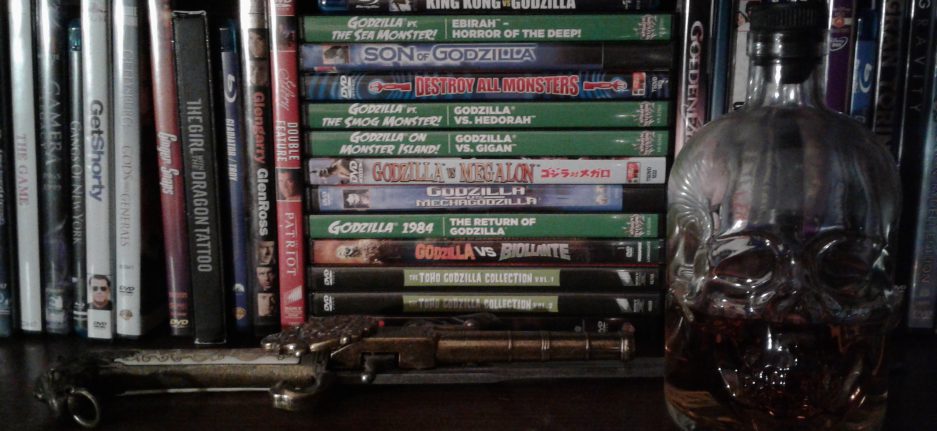It’s time, yet again, for another double feature, kids! This time out, there’s no real unifying theme or anything, though both films have single-word titles and both involve, in some manner, characters dying (and, no, that isn’t really a spoiler, trust me). I just don’t have quite as much to say for each as I normally would, so I figured I’d lump ’em together, give fans of differing genres an opportunity to gaze over the fence and see what else there is out there. Something like that.
First up, we’ve got Downrange.

The plot is pretty simple: a group of young people (think college-aged kids or thereabouts) driving down a long and lonesome road come across not a shiny demon demanding the playing of the best song in the world, but rather a ruthless and mysterious sniper. From a distance, he tries to pick off his new prey, while the latter try to survive, escape, and outmaneuver their tormentor.
The main draw for me was director Kitamura Ryûhei, whose previous works include the quasi zombie movie Versus, the family-friendly superhero flick Sky High, and the balls-to-the-wall franchise finale (sort of) Godzilla: Final Wars. Even when I don’t like his films (or, in the case of Versus, when I don’t really remember watching them), Kitamura tends to keep things visually interesting, at the very least. Here, that’s sorta/kinda the case, what with the solitary rolling tire as a harbinger for the incoming bullet onslaught and some spinning and wheeling camera shots throughout. Unfortunately, the former is a tad cliche (if still presented well), and the latter reminds me more of Saw‘s camera work, just with less, y’know, purpose, aside from punctuating the repetition and sameness of the rest of the shots. Still, the fact that most of the sniper’s shots are almost silent adds a dimension of fright and suspense that’s usually missing from films like this.
But, at the end of the day, this is just a ho-hum slasher flick with a shiny veneer. The characters are bland and annoying (do young people really use the initialism “BFE” when they’re in the middle of nowhere…?), the situation loses its novelty rather quickly, and I’m only left wondering why I should care by the time the end rolls around. It’s not a bad movie, really, and it’s nice to see some visceral violence in these things again, but there isn’t all that much to recommend this one over any other R-rated slasher out there. If that sort of thing is your bag, it’s worth checking out, but don’t expect anything special.
From that note, we head over to Euphoria. (What a segue!)

Here, if you listen to IMDb’s summary, we find “sisters in conflict travelling [sic] through Europe toward a mystery destination”. I mean, yeah, for about ten minutes or so, but I think there’s more to things here. In truth, the sisters are headed to a remote institution in Germany. One, an artist and a bit of a wayward child in her family, doesn’t know why they’re there, but the other does: she’s there to die. Y’see, this place, for a hefty price, makes its guests comfortable and happy before allowing them to die with dignity and grace. The wayward sister has a hard time dealing with the concept, especially when she learns that her sister has a terminal illness. The two come to grips with the situation and attempt an understanding with each other.
Alicia Vikander and Eva Green are both great here, and you can definitely feel their sisterly bond at times. There’s plenty of baggage to sort out during their emotional trip, and both bring their respective A-games to do just that. Also great, as per usual, is Charles Dance, who plays a wealthy man going out with a bang, a Richard Branson-style of brashness and insouciance in tow. Charlotte Rampling continues to do her wizened-lady-in-charge-of-things schtick (remember her doing the same thing in Red Sparrow?), admittedly fairly well and with characteristic deftness, and it’s nice to see my man Adrian Lester again (y’all might remember him from Primary Colors or, sadly, The Day After Tomorrow), even if it’s in a limited capacity.
The film’s strong point, though, is its look. Swedish writer/director Lisa Langseth makes full use of the countryside’s beauty and the institute’s real estate to let the sisters grow like the surrounding flora, plenty of room and varieties of lighting for their various needs, depending on the time. Cinematographer Rob Hardy continues his excellent work here (you can marvel at his prior efforts in films like Ex Machina and Annihilation, among several others), shrouding the sisters’ on-screen relationship in rich, soft colors and contrasts. For the majority of the runtime, I found myself thinking, “Damn, this movie looks so damn good!” It didn’t hurt that my ears were also getting pampered by Lisa Holmqvist’s strings-heavy score, one that accentuates the various moods on display and underlines the almost ethereal nature of the visuals from Langseth and Hardy.
If emotional family dramas (read: dramas taking place between family members) are your thing, give this one a go; otherwise, you’re not likely to get too much out of it, aside from some fine performances and visuals.

One thought on “Downrange & Euphoria”